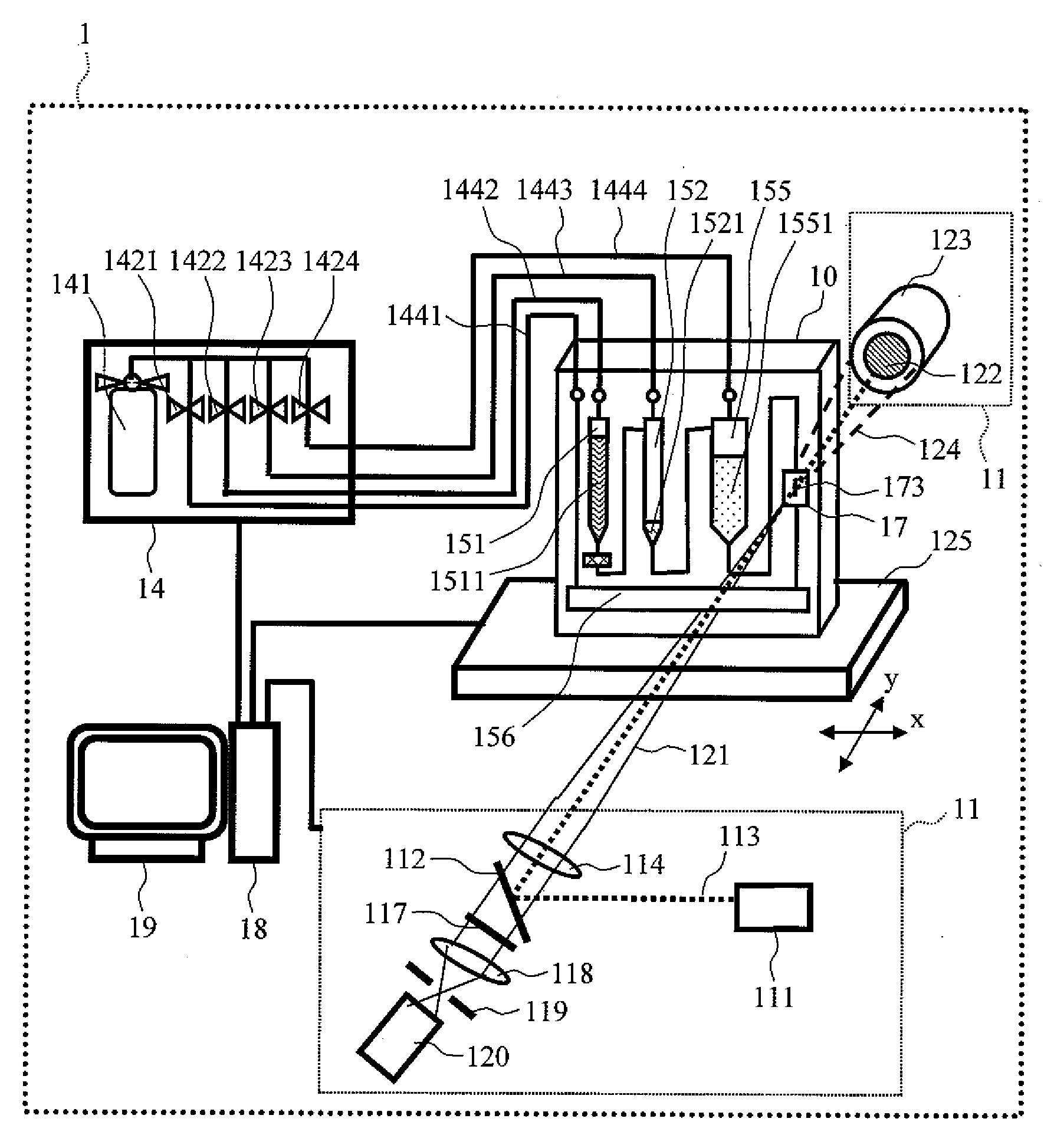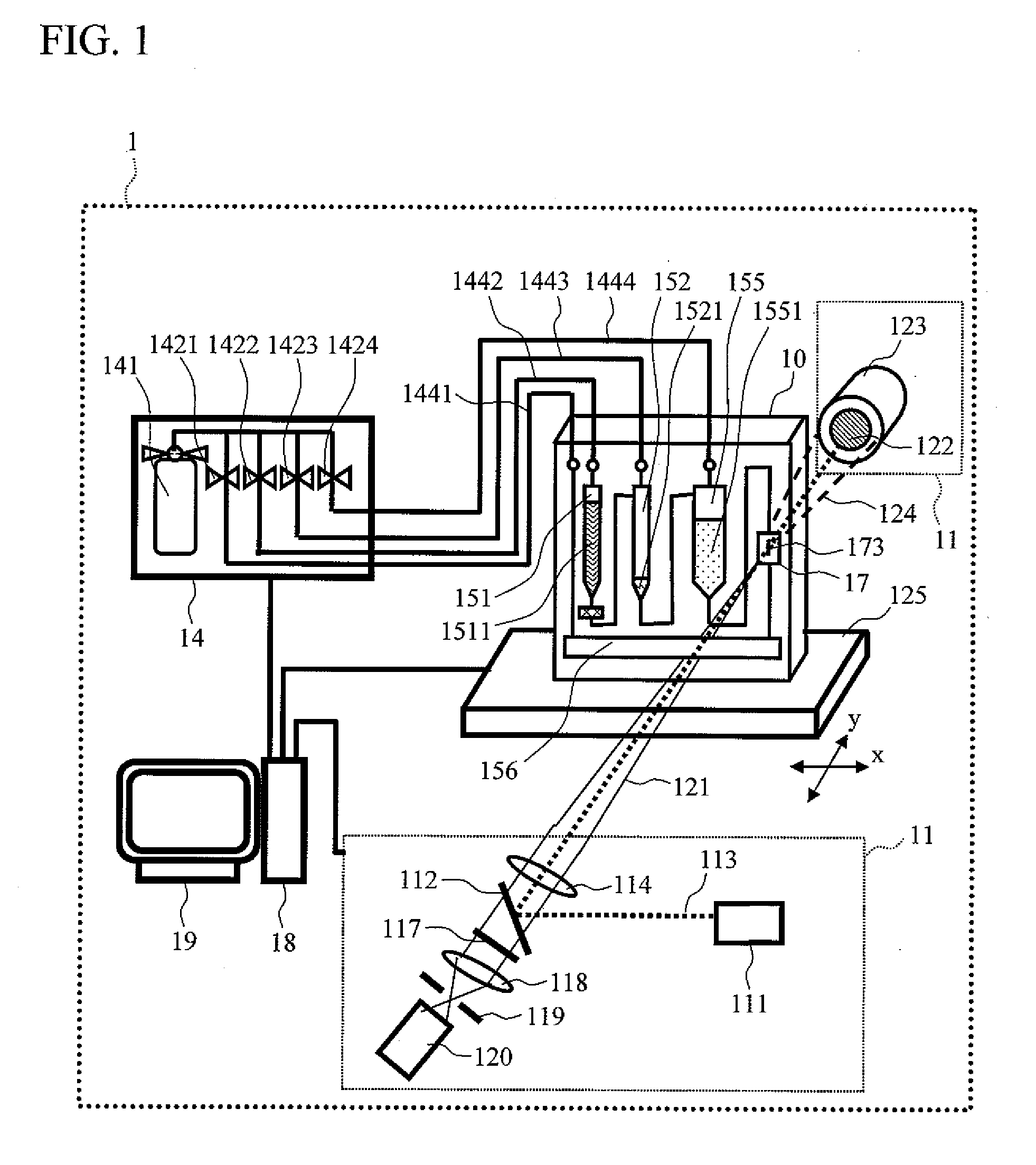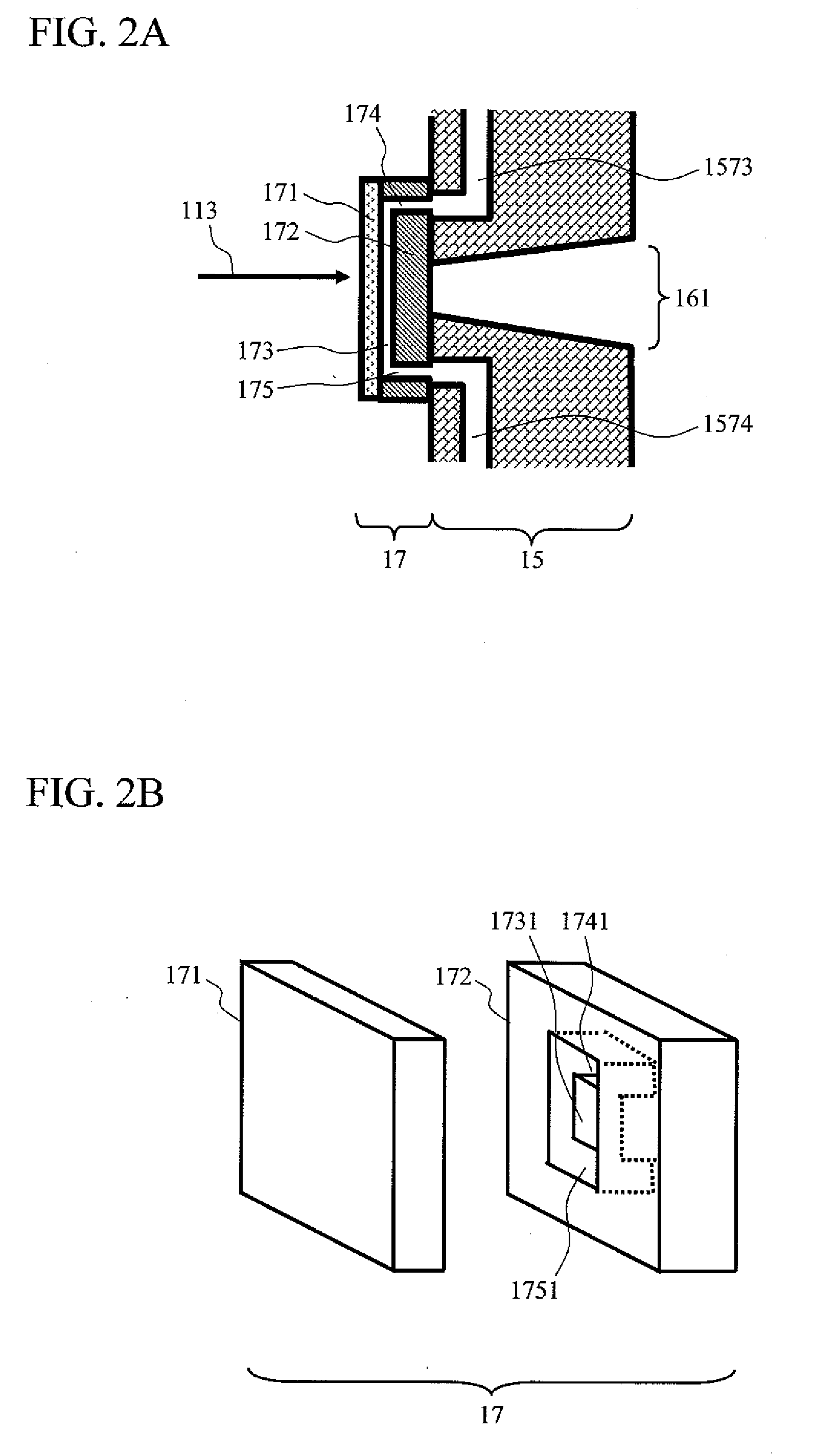Microorganism testing apparatus
a microorganism and testing apparatus technology, applied in the field of microorganism testing apparatus, can solve the problems of increasing background light, increasing cost per measurement, and reducing measurement sensitivity, so as to improve light collection efficiency, increase fluorescence detection intensity, and increase background light emitted
- Summary
- Abstract
- Description
- Claims
- Application Information
AI Technical Summary
Benefits of technology
Problems solved by technology
Method used
Image
Examples
Embodiment Construction
[0034]Hereinafter, an embodiment of the present invention will be described with reference to the drawings. It should be noted that the undermentioned embodiment of the present invention is one example, and other embodiments can be achieved by combination or replacement with publicly- or well-known techniques.
(A) Example of Overall Configuration of Device
[0035]FIG. 1 shows a configuration diagram of a microorganism testing apparatus 1 according to the embodiment of the present invention. The microorganism testing apparatus 1 includes a microorganism testing chip 10, a pressure supply device 14, an X-Y movable stage 125, and a detection device 11. The microorganism testing chip 10 holds a specimen and a reagent therein, and internally includes a mechanism for performing processes necessary for measuring microorganisms. The pressure supply device 14 controls the transportation of a specimen and a reagent in the microorganism testing chip 10 through chip connection pipes 1441-1444 conn...
PUM
| Property | Measurement | Unit |
|---|---|---|
| width | aaaaa | aaaaa |
| thickness | aaaaa | aaaaa |
| length | aaaaa | aaaaa |
Abstract
Description
Claims
Application Information
 Login to View More
Login to View More - R&D
- Intellectual Property
- Life Sciences
- Materials
- Tech Scout
- Unparalleled Data Quality
- Higher Quality Content
- 60% Fewer Hallucinations
Browse by: Latest US Patents, China's latest patents, Technical Efficacy Thesaurus, Application Domain, Technology Topic, Popular Technical Reports.
© 2025 PatSnap. All rights reserved.Legal|Privacy policy|Modern Slavery Act Transparency Statement|Sitemap|About US| Contact US: help@patsnap.com



